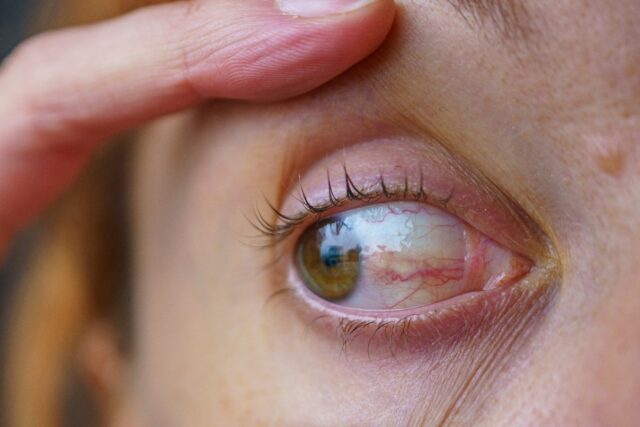Ocular Surface Disease (OSD) is a broad term encompassing various conditions that affect the surface of the eye, including the cornea, conjunctiva, and tear film. These conditions can range from dry eye syndrome to more severe inflammatory disorders, significantly impacting vision and quality of life. In this article, Bahram Alavi, the visionary founder and president of Atlas Ocular, delves into what OSD is, why it happens, the age groups it typically affects, and the risk factors, with a particular focus on the potential correlation between age and diabetes. Atlas Ocular is dedicated to developing biological products that harness the body’s natural healing abilities, focusing on the ophthalmic and optometric fields. Their innovative solutions aim to improve patient outcomes through superior technology and exceptional customer service.
What is Ocular Surface Disease?
Ocular Surface Disease refers to a spectrum of disorders affecting the surface of the eye. Bahram Alavi explains that the most common form is dry eye syndrome, which occurs when the eyes do not produce enough tears or when the tears evaporate too quickly. Other forms of OSD include blepharitis (inflammation of the eyelids), meibomian gland dysfunction (MGD), and allergic conjunctivitis. These conditions can cause symptoms such as redness, irritation, burning, and a gritty sensation in the eyes.
Why Does Ocular Surface Disease Happen?
The underlying causes of OSD can vary, but they generally involve disruptions in the tear film, inflammation, or structural abnormalities of the ocular surface. The tear film is composed of three layers: lipid, aqueous, and mucin. Bahram Alavi understands that each layer plays a critical role in maintaining the health and function of the ocular surface. Disruption in any of these layers can lead to OSD.
Bahram Alavi reveals common causes of OSD, which include:
- Tear Film Instability: Insufficient tear production or rapid evaporation can lead to dry eye syndrome.
- Inflammation: Chronic inflammation of the ocular surface or eyelids can damage the tear-producing glands.
- Environmental Factors: Exposure to wind, smoke, or dry climates can exacerbate symptoms.
- Contact Lens Use: Prolonged use of contact lenses can disrupt the tear film and lead to OSD.
- Medications: Certain medications, such as antihistamines and antidepressants, can reduce tear production.
Age and Ocular Surface Disease
Age is a significant risk factor for OSD. The prevalence of OSD increases with age, particularly after the age of 50. Bahram Alavi explains that this increase can be attributed to several age-related changes:
- Reduced Tear Production: As we age, the lacrimal glands produce fewer tears, leading to dry eye symptoms.
- Hormonal Changes: Post-menopausal women are at a higher risk of developing OSD due to hormonal changes that affect tear production.
- Eyelid Changes: Aging can lead to structural changes in the eyelids, such as laxity or incomplete closure, which can contribute to OSD.
- Increased Inflammation: Age-related inflammation can damage the ocular surface and tear-producing glands.
Diabetes and Ocular Surface Disease
Bahram Alavi understands that diabetes is another significant risk factor for OSD. Individuals with diabetes are more likely to develop OSD due to several factors associated with the disease:
- Peripheral Neuropathy: Diabetes can cause nerve damage, including to the nerves that control tear production, leading to reduced tear secretion.
- Inflammation: Diabetes is associated with chronic inflammation, which can damage the ocular surface and tear-producing glands.
- Hyperglycemia: High blood sugar levels can alter the composition of the tear film and contribute to OSD.
- Reduced Immune Response: Diabetes can impair the immune system, making the eyes more susceptible to infections and inflammation.
Risk Factors for Ocular Surface Disease
Beyond age and diabetes, Bahram Alavi explains that several other risk factors can increase the likelihood of developing OSD:
- Gender: Women are more likely to develop OSD, particularly after menopause.
- Lifestyle: Prolonged screen time, reduced blink rate, and poor air quality can contribute to OSD.
- Medical Conditions: Conditions such as rheumatoid arthritis, Sjögren’s syndrome, and thyroid disorders can increase the risk of OSD.
- Surgery: Eye surgeries, such as LASIK, can temporarily disrupt the tear film and contribute to OSD.
Ocular Surface Disease is a common and often debilitating condition that can significantly impact quality of life. Understanding the risk factors, including age and diabetes, is crucial for early detection and management. As we age, maintaining eye health through regular check-ups, a healthy lifestyle, and proper eye care becomes increasingly important. For individuals with diabetes, managing blood sugar levels and monitoring for symptoms of OSD can help mitigate the risk. Bahram Alavi emphasizes that by recognizing the signs and seeking appropriate treatment, individuals can maintain better eye health and overall well-being.










